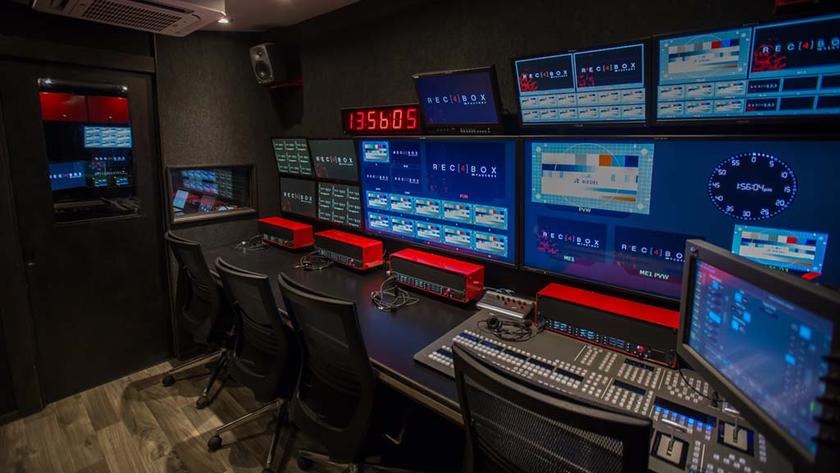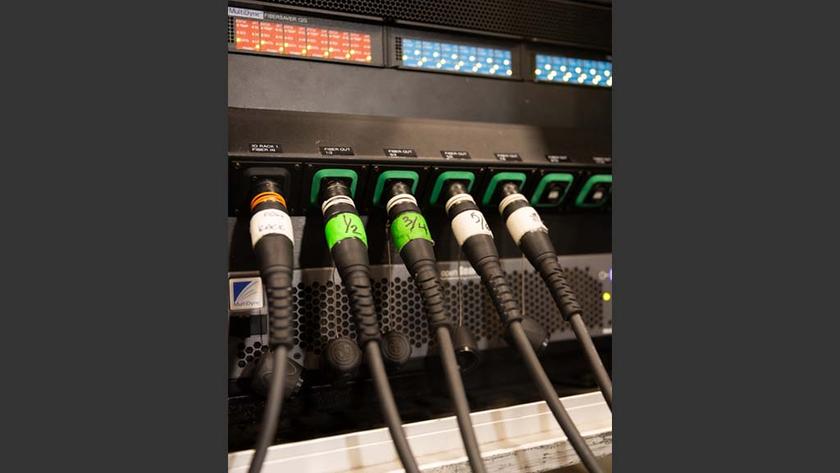Breece Hill's iStoRA digital video archive
Figure 1. Digital video archive and media asset management system. Click here to see an enlarged diagram.
For decades, small and mid-sized newsrooms and broadcast facilities have been accumulating massive local film and video libraries built upon growing shelves of expensive Beta, VHS, reel and DV tapes. These physical video libraries are staggering in size and expense and often render professionals powerless to locate, retrieve and reference specific high-value content in a timely fashion.
Broadcasters know that digital video archiving is the solution. But until recently, this option has been way too costly and technologically complex to implement, especially for smaller broadcasters and production facilities. Breece Hill, XenData and Pictron have collaborated to offer an all-in-one video archive server that allows facilities to transform outdated physical libraries into modern digital video archiving systems at an affordable cost. In addition, this new solution makes it easy for local libraries to be shared among an organization's nationwide and global locations, such as between the growing number of sister stations found in today's broadcasting industry. Legacy tape can now be converted at the local station level and automatically shared by sister stations.
Digital video archives: The time is now
Breece Hill’s iStoRA video archive server occupies 4RU of space and can store up to 560 hours of content at 25Mb/s MPEG-2. It runs XenData’s Archive Series Video Edition software and Pictron’s Media Gateway product suite.
The powerful yet economical integrated solution for digital video archiving begins with Breece Hill's iStoRA video archive server. It occupies 4RU of space in a control room and can store up to 560 hours of content at 25Mb/s MPEG-2.
The server runs XenData's Archive Series Video Edition software along with Pictron's Media Gateway product suite. The software is provided by a systems integrator and offers powerful media management tools, including automatic scene change detection, customizable metadata entry and remote search by frames, transcripts, storyboards, metadata and keywords. It also offers a similarly robust suite of archive management features.
Bringing this storage approach to the small and mid-sized broadcaster, the tiered system allows video content to be stored on a combination of hard disk and digital data tapes. Tapes are easily exported out of the unit to the shelf and are then managed by the XenData archive software using a standard Windows file system. Exported tapes are controlled by bar code, making retrieval from the shelf fast and easy.
Digital video archives also can be easily shared with other stations, allowing each station or facility to archive new content locally and convert older footage on an as-needed basis. This can be done with relatively inexpensive systems because once the video clips have been cataloged and archived, the video can be stored on high-capacity, inexpensive digital media.
Breece Hill uses modern digital data tape that is tested and proven every day for storing data. Each digital data tape can store up to 400GB of data in a cartridge measuring 4 1/4in × 4 1/4in × 3/4in. This results in a much smaller physical library because each tape alone can hold 36 hours of video of MPEG-2 at 25Mb/s — that's enough to store more than 1500 hours of DV on a single 36in bookshelf.
All the clips are available to browse and play out remotely, allowing editors to select candidate video clips to repurpose. Photo courtesy Pictron.
Value of an asset management system
The archive solution enables distributed user access through its bundled Pictron software. During ingest, the software creates a low-res proxy from the high-res video. This proxy is then used as the basis for a searchable database. Metadata can be added to the proxy file by subject matter, cameraman, editor, date and time, catalog categories (e.g., sunset, beach) or any other specific database grouping for the user. The asset management package will also storyboard the clip based on scene changes, extract any line 21 closed captioning and perform audio-to-text conversion.
Media asset management software programs allow users to log in remotely via the Web and search content many different ways. Users can search using the metadata, a key frame, or a key word contained in either the closed-captioned text or the text converted from the audio tracks. They can even use facial recognition to search for a particular person.
All the clips are available to browse and play out remotely (using the low-res copy), allowing editors to select candidate video clips that they wish to repurpose from remote group facilities. The XenData video archive software module then manages the video files archived on the digital data tapes located online or on the shelf.
Figure 2. Shared group media asset management system. Click here to see an enlarged diagram.
Once an editor selects the clips he or she needs, it's a simple matter to retrieve the full clip from the archive. Even if the video isn't online, the software will identify the bar code of the required tape. The server can support remote handheld bar code readers, allowing librarians to search and locate the correct tape on the shelf quickly and easily. It's then a matter of putting the data cartridge in the import/export slot of the unit and reading the required tape. The archived clip can be placed on the hard disk of the server unit for future use. The archive software built into the machine also allows for multiple tape copies to be made for off-site disaster protection or as a second copy for a centralized storage or group station.
An integrated media asset management and digital archive system can be constructed as a searchable catalog library at shared local group stations and can be accessed easily by each group member station. Users can log in to the various stations, search for content, play it in low-res format in a Web-based viewer (i.e., Windows Media Player, QuickTime, RealPlayer) select the clips they wish to access, create a playlist and export the high-res images from the local system.
Only one transfer is necessary to move the high-res clip between stations. This can be done via digital FTP transfer or physical delivery on a tape or DVD.
With solutions like these, it's now practical and cost-effective to transform outdated physical tape libraries into a top-notch, well-organized digital video archive that can be shared with other facilities and sister stations. This additional benefit allows each station to manage and retain control of content while making it available to other stations for use. In the end, broadcasters save space and are more efficient, and viewers get more diverse, on-target content.
Chris Stone is VP of product management for Breece Hill, an information storage and retrieval provider.
Get the TV Tech Newsletter
The professional video industry's #1 source for news, trends and product and tech information. Sign up below.













